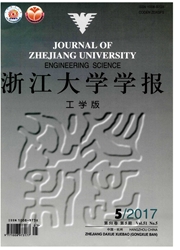

 中文摘要:
中文摘要:
采用线性滤波法中的自回归模型(AR)法对冷却塔表面空间相关的多点脉动风压时程进行模拟,分析脉动风压在时域和频域上的分布特征,发现准定常假设不够准确.同时采用有限元方法对冷却塔的自振频率分布和模态特征进行讨论,发现冷却塔的自振频率较为密集,前40阶自振频率为1.0~2.2Hz.通过冷却塔在脉动风压作用下的瞬态响应分析,得到冷却塔各响应的时域和频域特征,描述响应中的背景分量和共振分量的分布特点,并探讨AR法中采样间隔的合理取值.通过对有限元瞬态分析的结果分析指出,风致位移响应在塔身颈部附近达到最大,Mises应力响应则在塔底附近达到最大值.
 英文摘要:
英文摘要:
An auto-regressive (AR) linear filter method was used to simulate the spatial correlative multiple fluctuating wind load on the outside surface of cooling tower. The characteristic of simulation results was analyzed with the time domain and the frequency domain method. Results indicate that quasi-steady theory is not appropriate. The distribution of natural frequency and the mode characteristic were calculated through the finite element method. The natural frequencies were densely distributed,and first 40 of them were confined to 1.0~2.2 Hz. The transient analysis was conducted under the fluctuating wind load. Then the various responses of cooling tower in time domain and frequency domain were achieved. The background and the resonant parts were studied respectively,and the appropriate sampling interval was discussed. Transient dynamic analysis results show that the wind induced displacement reaches maximum at someplace close to neck and Mises stress reaches maximum at someplace near the bottom.
 同期刊论文项目
同期刊论文项目
 同项目期刊论文
同项目期刊论文
 期刊信息
期刊信息
